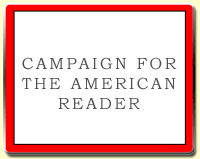 Her latest book is Tolstoy: A Russian Life.
Her latest book is Tolstoy: A Russian Life.One collection of Russian short fiction she discussed with Daisy Banks at The Browser:
Master and Man and Other StoriesRead about the other collections Bartlett discussed at The Browser.
by Leo Tolstoy
What kind of world does your next author, Leo Tolstoy, write about in his short story “What Men Live By”, in the collection Master and Man?
With this story we jump forward to the 1880s, and into the world of the peasantry as imagined by an aristocrat who went rather further than Turgenev in trying to atone for his guilt before Russia’s oppressed underclass. As well as the great novels, Tolstoy also wrote some very fine short stories. Many people would regard The Death of Ivan Ilych or Hadji Murad as his best short prose work, or maybe even Strider, an extraordinary tale narrated by a horse. I am very fond of this story though, because it is charming, the moral is worn lightly and I know what it meant to Tolstoy.
Rather like the Valkyrie Brünnhilde in Wagner’s Ring [cycle of operas], who is punished by Wotan for refusing to bring Siegmund to Valhalla, the main character in Tolstoy’s story is an angel, Mikhail, punished by God for refusing to take a woman’s life. Mikhail is sent to earth to discover what men live by. A humble peasant shoemaker takes pity on the naked man he stumbles across, slumped up against a chapel wall one cold autumn afternoon, and brings him home. After Mikhail has worked for a while as a cobbler and discovered that men live by love, he springs new wings and is allowed to return to heaven.
This story appeared in a children’s journal in 1881. It was Tolstoy’s first piece of published fiction after Anna Karenina, which he had finished four years earlier. In the years in between, Tolstoy underwent a spiritual crisis which led to him rejecting the Russian Orthodox Church. He ended up producing his own translation of the Gospels which threw out all the miracles and concentrated on Christ’s ethical message. Although there is continuity with everything Tolstoy had written before, “What Men Live By” is his first conscious attempt at expressing his new faith in fictional form. It is prefaced by no fewer than eight epigraphs about love taken from St John in his new translation.
So how does it differ from a work like Anna Karenina?
Anna Karenina is a novel written about upper-class society in which peasants are part of the background. But Tolstoy’s conscience was already troubled, and when he finished it he renounced writing fiction for an educated audience. The main characters in “What Men Live By” are peasants. The story is a model of clarity, but with Tolstoy itis always the art which conceals the art. He had wanted to simplify his literary language ever since working on his ABC [educational] book in the early 1870s, just before he began Anna Karenina, but he was an inveterate craftsman. It is quite moving to discover that he produced 33 drafts of “What Men Live By” before he was happy with it.
It is not actually a story Tolstoy thought up himself. He had been entranced by the rhythms and cadences of the Russian language since putting together medieval epics for his ABC book, and would often go out to the main highway near Yasnaya Polyana [his home in western Russia] to chat to the pilgrims and write down some of their sayings. When he learned that in the remote far north of Russia there were still a few peasants who maintained the oral tradition of reciting epic poems and fables by heart, he invited one of them to stay with him. “What Men Live By” is based on a fable told him by this peasant reciter, originally about fishermen from northern Russia.
Visit Rosamund Bartlett's website and learn more about Tolstoy: A Russian Life.
Writers Read: Rosamund Bartlett.
My Book, The Movie: Tolstoy: A Russian Life.
The Page 99 Test: Tolstoy: A Russian Life.
--Marshal Zeringue



